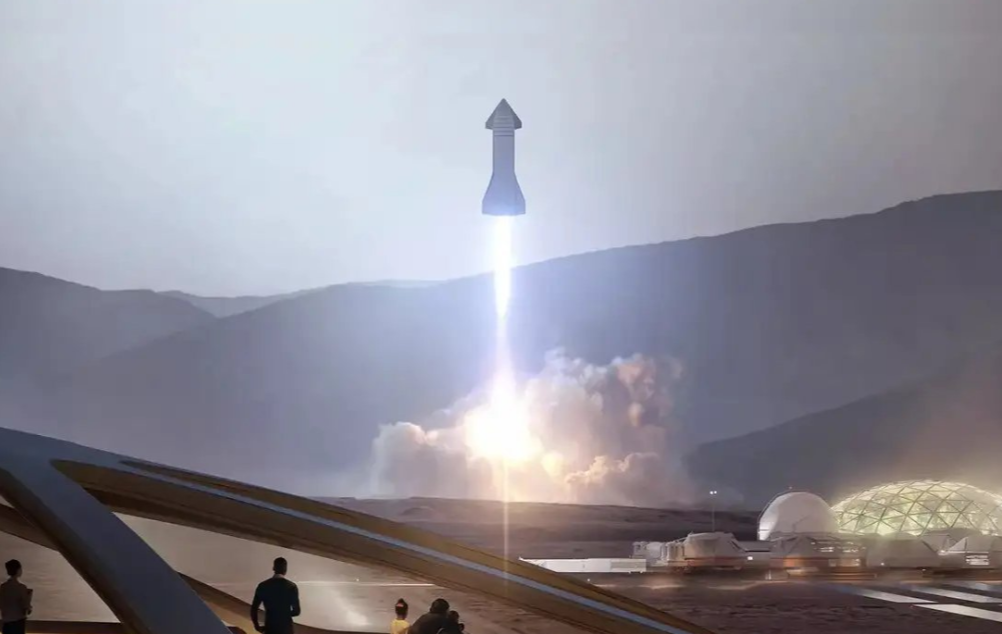SpaceX Starship Flight 9 Fails: In what marks the third consecutive setback for Elon Musk’s SpaceX, Starship Flight 9 ended in failure after crashing over the Indian Ocean just 30 minutes post-launch. The 123-meter mega rocket lifted off from SpaceX’s Starbase facility in Texas but lost control mid-flight and disintegrated before completing its objectives.
SpaceX Starship Flight 9 Fails:A Tumultuous Flight Ends in Failure
In what marks the third consecutive setback for Elon Musk’s SpaceX, Starship Flight 9 ended in failure after crashing over the Indian Ocean just 30 minutes post-launch. The 123-meter mega rocket lifted off from SpaceX’s Starbase facility in Texas but lost control mid-flight and disintegrated before completing its objectives.
The launch, which was the ninth integrated test flight of Starship, began with optimism. The Raptor engines on the Super Heavy booster ignited properly, and the rocket blasted off into the sky, climbing powerfully through its early stages. However, shortly after reaching maximum aerodynamic pressure, the rocket started tumbling and broke apart while coasting in space.
Starship has now completed nine integrated test flights aboard its Super Heavy boosters. Before this mission, there had been four successful flights and four failures that ended in explosions. Flight 9 tips the balance, marking a fifth failure. However, it was notable for being the first time SpaceX reused a Super Heavy booster—an important step toward the company’s long-term goal of building a fully reusable launch system.
Flight 7 in January and Flight 8 in March both faced problems in the upper stage of the rocket. Flight 8 flew farther than its predecessors but developed leaks and began spinning out of control before breaking apart. These technical issues have not only slowed Starship’s development but also caused repeated disruptions to air traffic in surrounding regions, especially Florida and the Caribbean.
Despite the outcome, the launch was not without key achievements. Unlike earlier test flights, Flight 9 did not explode on the launch pad or during the initial ascent. The ability to reuse a booster is a major milestone for SpaceX’s design philosophy, focused on cost reduction through hardware recovery and reuse.
Elon Musk watched the latest test flight from SpaceX’s control center wearing a black “Occupy Mars” T-shirt—underscoring his long-standing goal of making life multi-planetary. Starship plays a central role in that vision. Designed to carry both humans and heavy cargo, the rocket is intended for deep space missions, including landings on the Moon and eventual colonization efforts on Mars.
Before Launching Spacex Office said:
While there are still capabilities to be proven, Flight 9 should be seen as a cautiously optimistic win for the Starship program: – 8th straight reliable ascent burn for Super Heavy, the largest and most powerful rocket booster ever – Super Heavy booster reuse proven with 33/33 Raptor engines — something never accomplished by a rocket of this size, or by any other organization in the history of spaceflight – Ship ascent burn through SECO after two consecutive failures of a new version Work remains, but the future is bright. More robust and reliable designs are on the way. This process is iterative by design, and SpaceX will keep marching forward.
However, technical hurdles and recent test failures are adding pressure. SpaceX is reportedly behind schedule in developing a Starship variant for NASA’s Artemis program, which aims to land astronauts on the Moon by 2027. The repeated setbacks raise questions about whether the company can meet the program’s critical milestones on time.
Starship’s development remains one of the most ambitious aerospace engineering efforts in history. While setbacks are expected in a program of this scale and complexity, three consecutive failures—including this latest crash—highlight the enormous challenges still ahead.
As SpaceX evaluates data from Flight 9 and works to fix the flaws that caused the rocket to fail, the journey to the Moon and Mars continues. For Musk, each failed test is another lesson learned on the path toward making interplanetary travel a reality.

